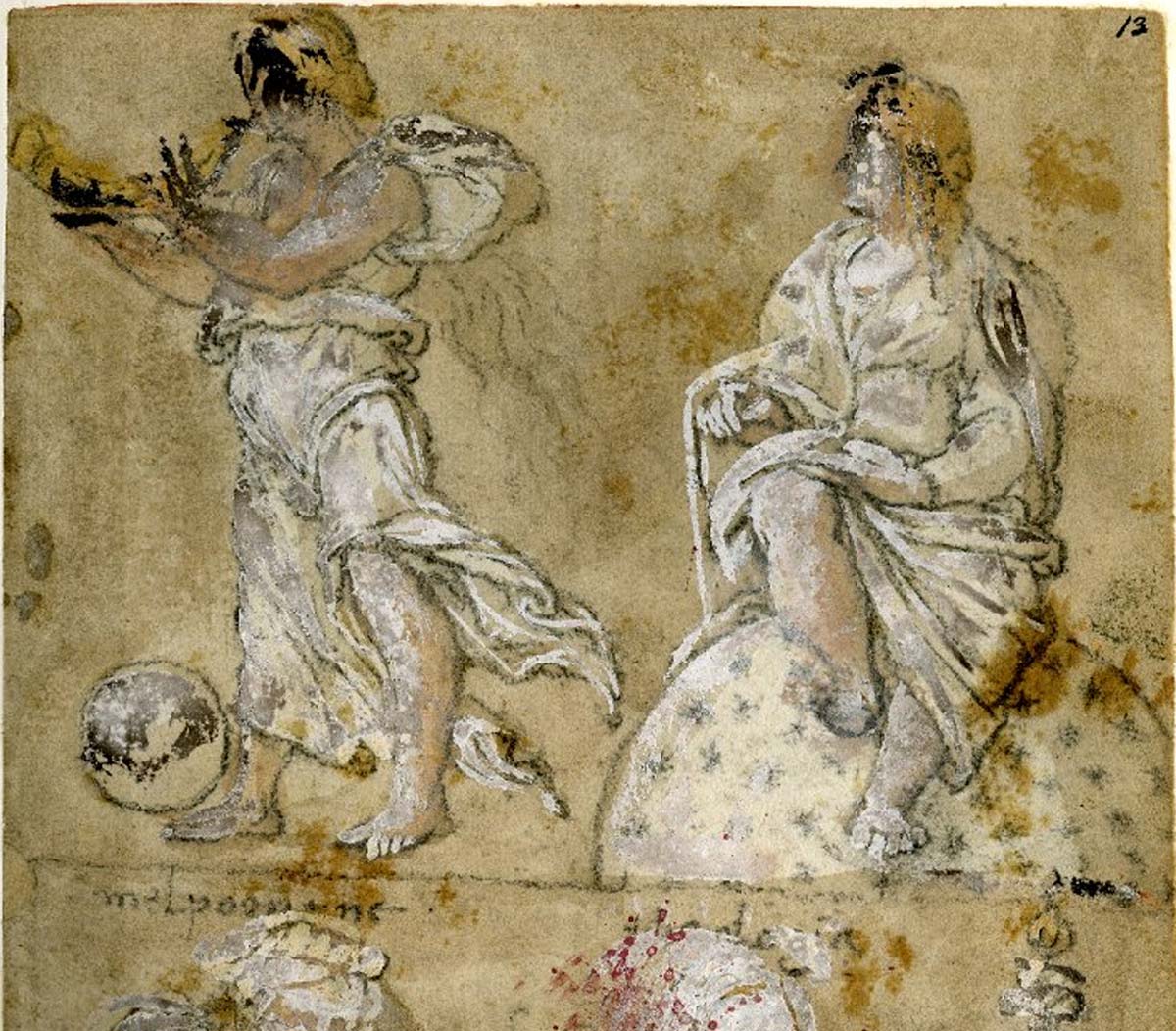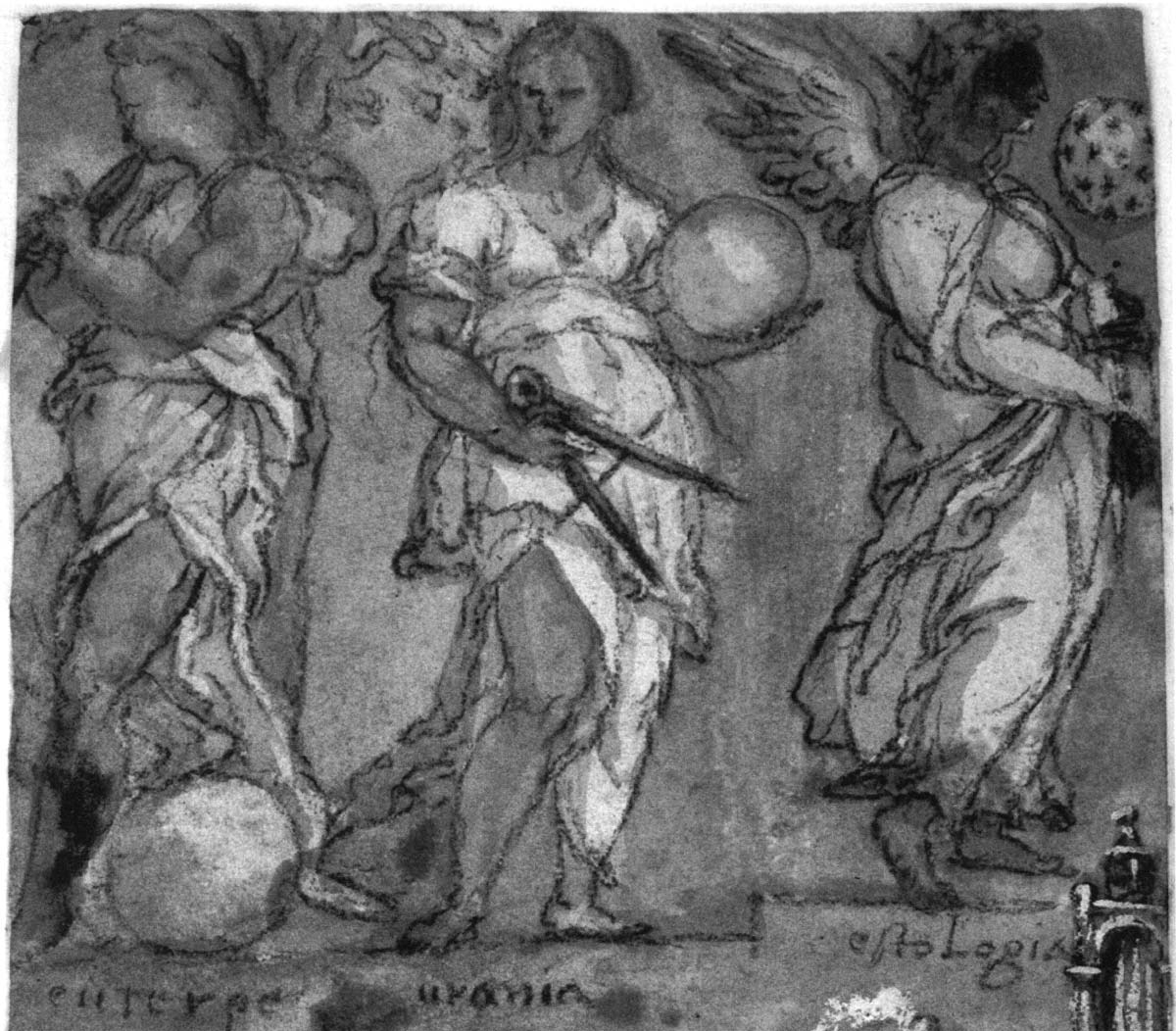Tarocchi di Mantegna, c.1465
The so-called Tarocchi di Mantegna (c.1465) reflect an ideological structure bringing to mind the soul's progress towards perfection.
The so-called “Tarocchi di Mantegna” is a double series of 50 instructional engravings each, the E series and the S series. They weren’t produced by Andrea Mantegna (1431-1503), however, the subjects of the set are mentioned by Giorgio Vasari who writes in his Lives about Mantegna that he created copper prints of trionfi - another name for the tarot Trumps.
Right: detail from Iliaco, no. XXXI, depicting the winged male genius or spirit of the sun, his name sharing the root with Helios (Elios). He embodies light and energy.
There are no suits and the images are numbered consecutively from 1 to 50, divided into the following groups: Society ⋄ Apollo and the Nine Muses ⋄ the Arts and the Sciences ⋄ the Seven Virtues and Sun, Time and the World ⋄ the Planets and the Spheres.
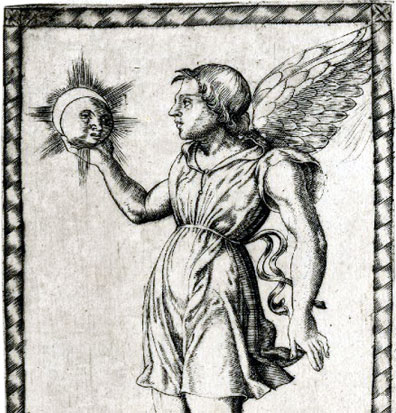
XXXXX Prima Causa
XXXXVIIII Primum Mobile
XXXXVIII Octava Spera
XXXXVII Saturno
XXXXVI lupiter
XXXXV Marte
XXXXIIII Sol
XXXXIII Venus
XXXXII Mercurio
XXXXI Luna
XXXX Fede
XXXIX Speranza
XXXVIII Charita
XXXVII lusticia
XXXVI Forteza
XXXV Pnidencia
XXXIIII Temperancia
XXXIII Cosmico
XXXII Chronico
XXXI Iliaco
XXX Theologia
XXVIIII Astrologia
XXVIII Philosofia
XXVII Poesia
XXVI Musicha
XXV Aritmetricha
XXIIII Geometria
XXIII Rhetorica
XXII Logica
XXI Grammatica
XX Apollo
XVIIII Clio
XVIII Euterpe
XVII Melpomene
XVI Talia
XV Polimnia
XIIII Erato
XIII Terpsicore
XII Urania
XI Caliope
X Papa
VIIII Imperator
VIII Re
VII Doxe
VI Chavaher
V Zintilomo
IIII Merchadante
III Artixan
II Fameio
I Misero
Thus we have a system of divine activities and functions organised into a hierarchy, reflecting an ideological structure and bringing to mind the soul's progress towards perfection. Humanists took up the challenge of reconciling Neoplatonism and Hermetism with their philosophical Christianity. The series was intended for edification of the mind, and also used as workshop patterns in artists' studios.

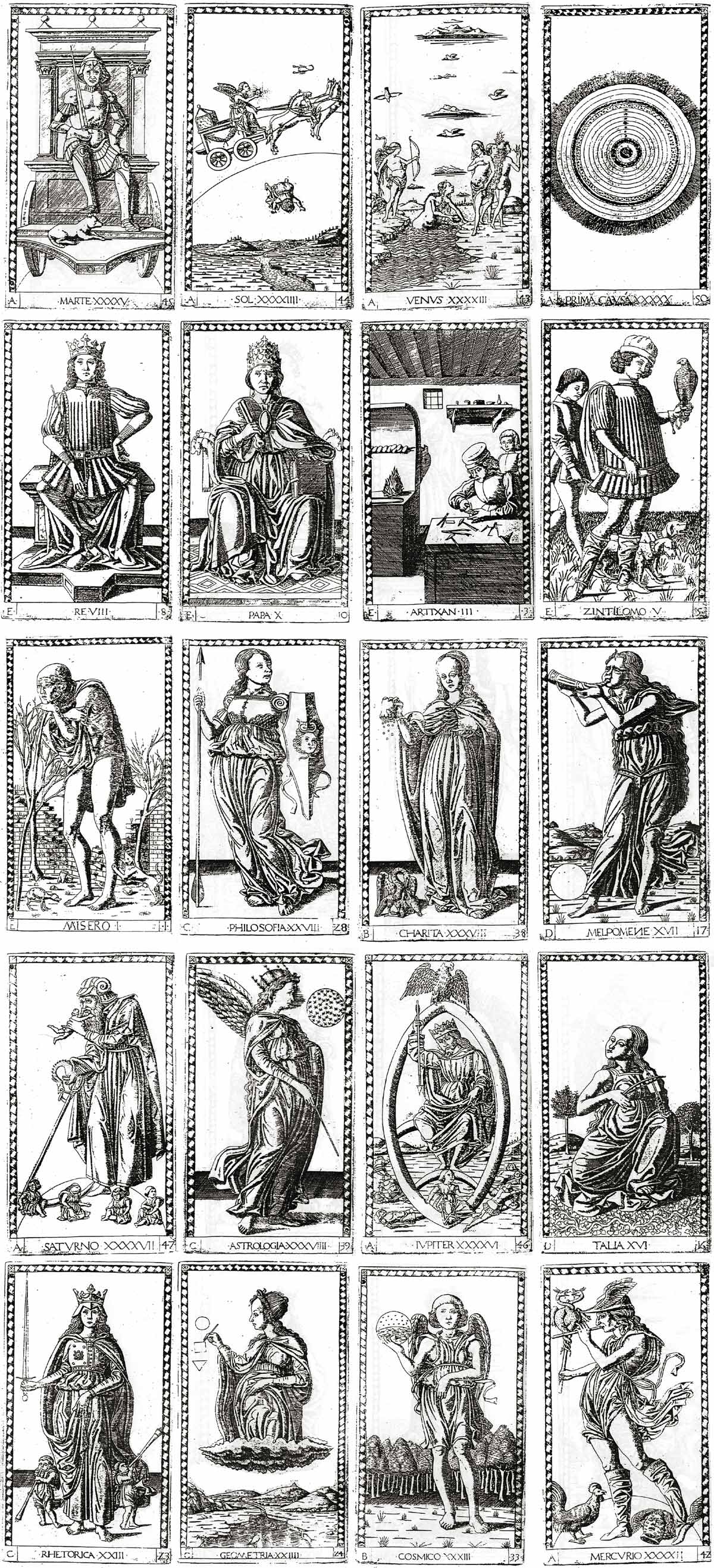
Above: The Mantegna “Saturno” card (second row from bottom left) allegorically shows an old man, maybe Chronos of Greek mythology, lifting a child to his mouth while other children await their fate at his feet. In his other hand, Saturn holds an Ouroboros, a small dragon or serpent biting its own tail, and a scythe. Time that devours its own offspring is a metaphor for “bringing to an end all things which have a beginning”.
Besides the double series of 50 engravings each, the E series and the S series, there are a number of copies by different artists of the Tarocchi di Mantegna. The young Dürer copied of some of them. Of the known examples none were made into a pack of playing cards, but were printed onto thin paper as black and white outlines. However, woodcut copies of these engraved images occur in later educational or didactic books.
The engravings are also known to have provided inspiration to later artists, including the prolific Bolognese artist Amico Aspertini (c.1474–1552), who made copies of the tarocchi in his note books and produced fresco cycles with the same subjects. Ludovico Lazzarelli (late 16th century) was also inspired by the tarocchi images. (see Castaldo, 2012).
Above: details from the sketch-book of Amico Aspertini (c.1474–1552) showing figures copied from the Tarocchi cards. London II codex. Coloured chalks and wash, heightened with white, 219x159 mm. © Trustees of the British Museum.
The engravings all have the sharply defined character of a single school, that of Ferrara, although the E and S series show a difference in execution. The series of engravings were composed as a pious game to be enjoyed in learned company, depicting a mirror of the divine cosmic order and the divine power ruling it. The 50 cards are split up into five parts with ten cards each, every part corresponding to a stage in the divine order as it appears in Thomas Aquinas' work. The highest group, Heaven (marked with an A), includes the "Prima causa", "Primo mobile" and the seven planets. The remaining series proceed down to the lowest degree of human existence, the Misero (number 1).
Relating to the varied sources of inspiration, Joscelyn Godwin [2002] writes about ideas deriving from Egyptian esotericism which had recently reached Europe through the Corpus Hermeticum, translated into Latin by Marsilio Ficino in 1463. A Christian version of it was already well known, and given its classic form by Dante. Godwin also quotes Jean Seznec who showed that Mercury of the Tarocchi is based partly on the medieval tradition, but also on a drawing of a classical Mercury made in Greece by Cyriacus of Ancona. Jupiter has his eagle, an arrow to serve as thunderbolt, and his favourite Ganymede, but he sits in a mandorla with his feet on a rainbow, just as Christ or Mary appear in Gothic cathedrals.
Placed edge to edge, they form, as it were, a symbolic ladder leading from Heaven to earth. From the summit of this ladder God, the Prima Causa, governs the world - not directly, but stepwise, ex gradibus, by means of a succession of intermediaries. The divine power is thus transmitted down to the lowest level of humanity, to the humble beggar. But the ladder can likewise be read from bottom to top; seen in this way it teaches that man may gradually raise himself in the spiritual order, reaching at last the heights of the Bonum, the Veram, and the Nobile - and that science and virtue bring him closer to God. [Jean Seznec, The Survival of the Pagan Gods]
Each figure in the Tarocchi di Mantegna has a name and a number. In some respects they remind us of the Hofämterspiel. A distinction is that the Tarocchi reflects a world order prompted by humanism, with the aristocracy and the church ranking lower than the arts, the sciences, the virtues, the planets and the spheres. The Hofämterspiel reflects feudal society.
Card games based around the Virtues and Vices, or Social Subjects, have of course been produced from time to time over the centuries. Possibly the tarot trumps were merely an alternative or condensed version of these images, which most educated people would recognise, added to a pack of cards for the purpose of making a new card game and to keep the players' minds on pious thoughts.
REFERENCES and ACKNOWLEDGEMENTS
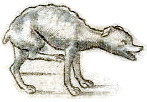
Thanks to Samten de Wet for additional research.
Castaldo, Daniela: Amico Aspertini's Apollo and Muses in the Isolani Castle at Minerbio near Bologna, Music in Art, Vol. 37, No. 1/2, The Courts in Europe: Music Iconography and Princely Power (Spring—Fall 2012), pp. 71-82, published by Research Center for Music Iconography, The Graduate Center, City University of New York. https://www.jstor.org/stable/24420195
Chishty-Mujahid, Nadya: An Introduction to Western Esotericism: Essays in the Hidden Meaning of Literature, Groups, and Games, Edwin Mellen Press, 2008
Godwin, Joscelyn: The Pagan Dream of the Renaissance, Thames and Hudson, London, 2002
Götz Pochat: Luca Signorelli's “Pan” and the so‐called “Tarocchi di Mantegna”, Konsthistorisk tidskrift/Journal of Art HistoryHistory, 36:1-4, 92-105.
Pratesi, Franco: In Search of Tarot Sources, The Playing-Card vol.27 No.2 (1998) pp.64-68; No.3 (1999) pp.111-116.
By Simon Wintle
Spain • Member since February 01, 1996 • Contact
I am the founder of The World of Playing Cards (est. 1996), a website dedicated to the history, artistry and cultural significance of playing cards and tarot. Over the years I have researched various areas of the subject, acquired and traded collections and contributed as a committee member of the IPCS and graphics editor of The Playing-Card journal. Having lived in Chile, England, Wales, and now Spain, these experiences have shaped my work and passion for playing cards. Amongst my achievements is producing a limited-edition replica of a 17th-century English pack using woodblocks and stencils—a labour of love. Today, the World of Playing Cards is a global collaborative project, with my son Adam serving as the technical driving force behind its development. His innovative efforts have helped shape the site into the thriving hub it is today. You are warmly invited to become a contributor and share your enthusiasm.

Related Articles
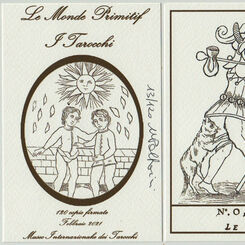
Le Monde Primitif Tarot
Facsimile edition produced by Morena Poltronieri & Ernesto Fazioli of Museo Internazionale dei Taroc...
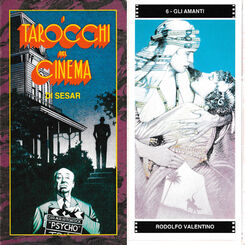
I Tarocchi del Cinema (di Sesar)
A set of Tarot trumps on the subject of the cinema, with designs by Sergio Sarri.
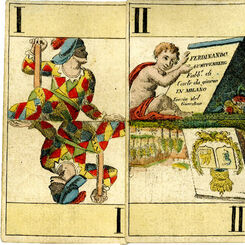
Natural History Tarocchi
Natural History Tarocchi by Ferdinando Gumppenberg, Milan.
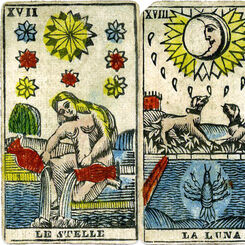
Tarocco Piemontese by Giovanni Rossi
18th c. Piedmont Tarocchi by Giovanni Rossi, Turin.
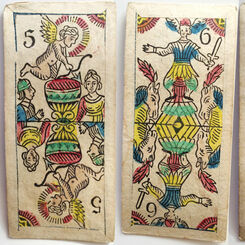
Tarocchini Bolognesi by Carlo Zanardi
Tarocchini Bolognesi by Carlo Zanardi, c.1850
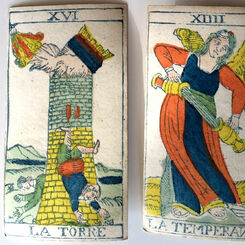
V. F. Solesio Tarot
V. F. Solesio Tarot, Genoa, mid-late 19th century.
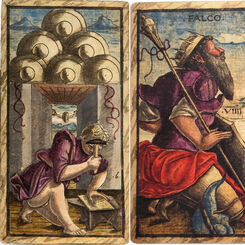
Sola-Busca Tarocchi
The Sola-Busca Tarocchi, c.1491
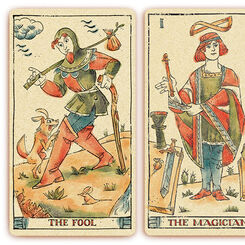
Tarot of Musterberg
Designed by Cesare Asaro to simulate decks from the 1700s or earlier, the Tarot of Musterberg is bas...
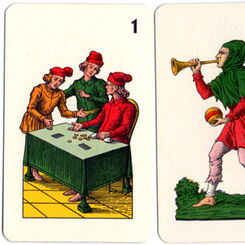
Tarocco Siciliano
The highly individual Sicilian Tarot has the Italo-Portuguese suit system with straight, interlockin...
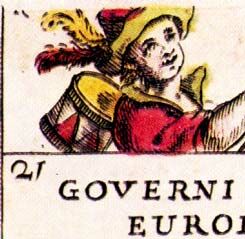
L’Utile col Diletto
Geographical and Heraldic Tarocchi cards from Bologna, 1725.
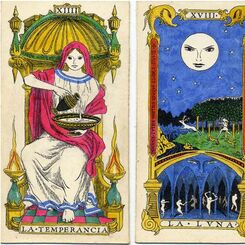
Oliver Mundy tarot
Original Tarot designs in Italian Renaissance style by Oliver Mundy.
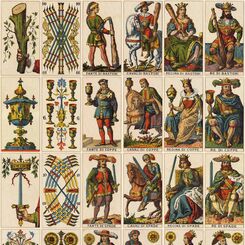
Serravalle-Sesia Tarot
Serravalle-Sesia Tarot published by Fratelli Avondo, c.1880.
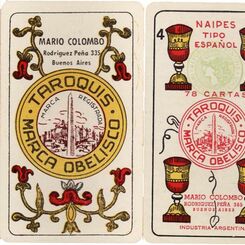
Taroquis ‘Obelisco’
78-card 'Taroquis Marca Obelisco' published by Mario Colombo, Buenos Aires, during the 1950s, 60s & ...
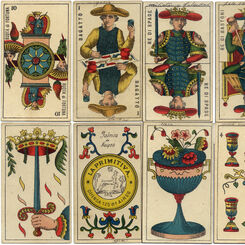
Tarocco Piedmontese by Fabrica de Naipes La Primitiva, Bs Aires
Tarocco Piedmontese by Fabrica de Naipes La Primitiva, Defensa 125, Buenos Aires c.1890.
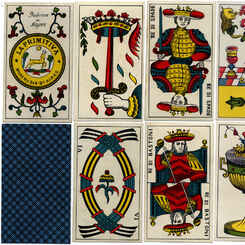
Tarocco Piedmontese, Buenos Aires c.1900
Tarocco Piedmontese by Fabrica de Naipes La Primitiva, Moreno 248, Buenos Aires c.1900

Tarots Egipcios Kier
The “Tarots Egipcios” was first published by Editorial Kier S.A. in c.1971 with Spanish titles, with...
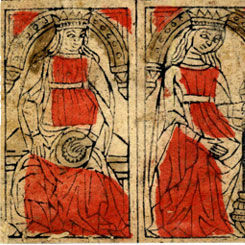
XV Century Italian Playing Cards
Cards from a pack of an early form of north Italian playing cards, with the swords back-to-back and ...
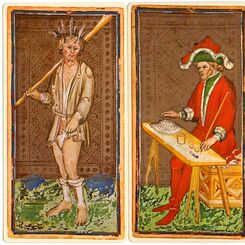
The Visconti-Sforza Tarot, c.1460
This pack of tarot cards appears to have have been made in the Bembo workshop in Cremona for Bianca ...
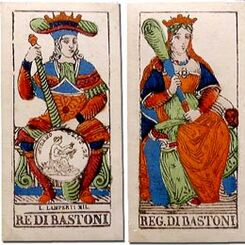
Tarocco Milanesi by Lamperti (Milan) c.1850
Tarocco Milanesi by Lamperti (Milan) c.1850
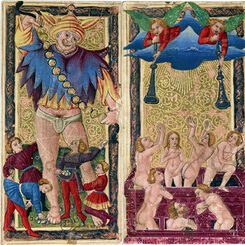
Hand-Painted Tarocchi Cards
Hand-painted Tarocchi cards sometimes known as ‘Charles VI tarot’, North Italy, 1475-1500.
Most Popular
Our top articles from the past 60 days


